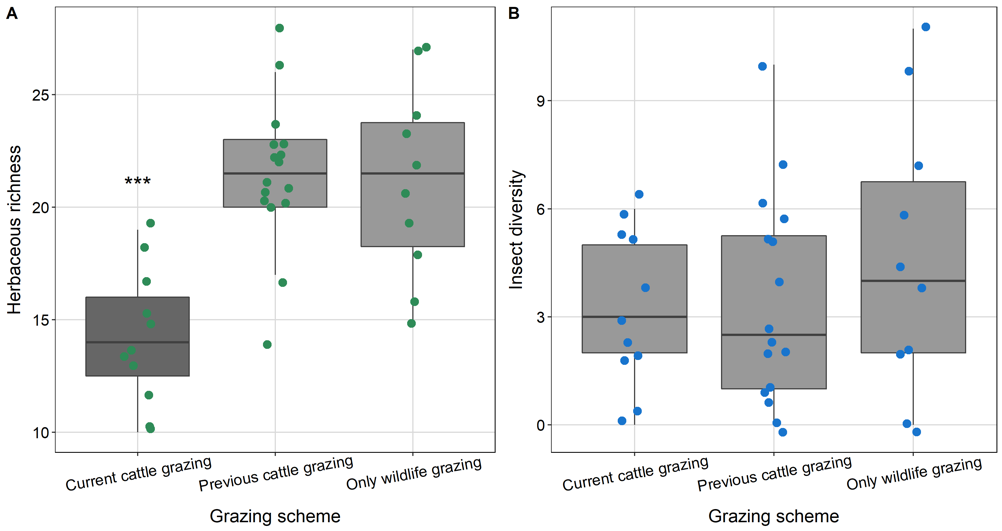Master Thesis Results: Mara North grazing system secures plant species richness and grass-dwelling insect diversity
Master thesis by David Bækby Houborg, Aarhus University shows that with a rotational grazing system, the conservancy supports wildlife populations as well as a recovery period of 5 months for the plant species richness and insect diversity.
On African savannas, wildlife are to an increasing degree being replaced by livestock. To protect the remaining wildlife, semi-protected community-based conservancies, like those in the Maasai Mara, are unique for supporting wildlife as well as livestock, such as cattle. However, little do we know of how these conservancies conserve biodiversity and how cattle-dominated systems affect plant and insect diversity.
In his master thesis study, David bækby Houborg utilized the rotational grazing plan in the Mara North Conservancy to sample and compare plant species richness and grass-dwelling insect diversity in areas under current cattle grazing, areas with previous cattle grazing (2-6 months ago) and areas with only wildlife grazing.
Research result
David found areas under current cattle grazing had two thirds the plant species richness compared to areas with previous cattle grazing and areas with only wildlife grazing. However, it took approximately 5 months for the plant richness to reach former levels. He further found that grass-dwelling insect diversity was not directly affected by cattle grazing. Grass-dwelling insect was however foremost correlated to grass height.
Conservation implications
David´s study revealed that the current grazing system in Mara North Conservancy presently create conditions that are adequate to secure plant species richness and grass-dwelling insect diversity. With a rotational grazing system, the conservancy supports wildlife populations as well as a recovery period of 5 months for the plant species richness and insect diversity. However, research is still needed to monitor the progress to ensure the recovery period and biodiversity is maintained.
How cattle grazing and a 5-month recovery period may apply in other areas and effect other species groups are not certain. To fully understand the effects of the replacement in herbivores on African savannas and how a mixed system with cattle and wildlife can coexist and promote biodiversity, more data is needed.

Herbaceous vegetation and insect diversity by grazing scheme. Boxplot presents the effect of the grazing scheme on the plant species richness (A) and grass-dwelling insect diversity (B). Current cattle grazing with cattle grazing 0-1 months ago, previous cattle grazing was areas with cattle grazing 2-6 months ago and areas with only wildlife grazing had been without cattle the last 6 years. Insect diversity was not significantly affected by the grazing scheme.
